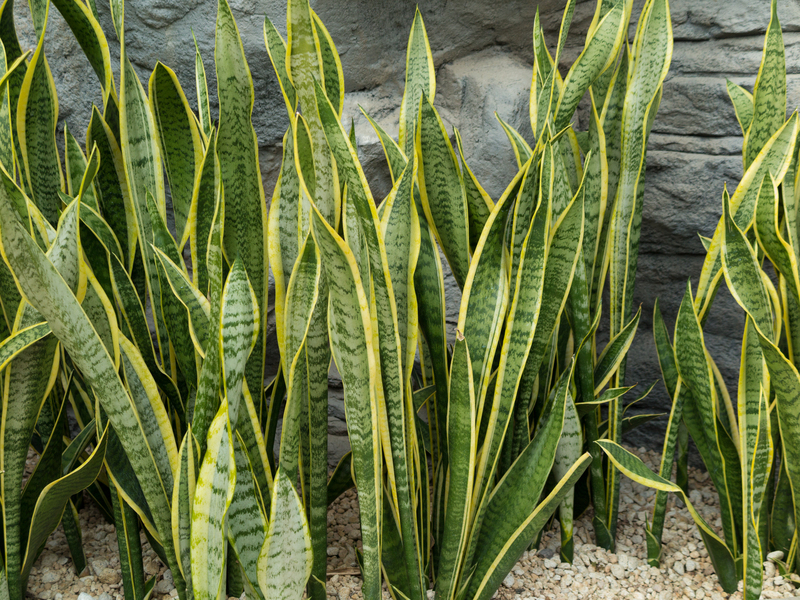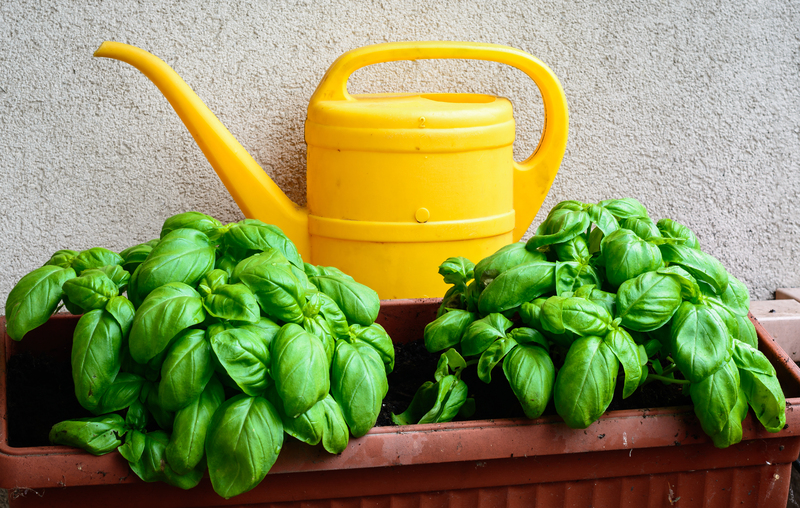Ideas for a dog-friendly, flourishing garden
Posted on 23/09/2025
Creative Ideas for a Dog-Friendly, Flourishing Garden
A vibrant, lush garden and a happy, playful dog - that's the dream for many pet owners! But how can you combine a flourishing, beautiful outdoor space with your canine companion's needs? Fortunately, a dog-friendly garden is absolutely possible, with thoughtful planning, smart plant choices, and dedicated design.
In this comprehensive guide, discover how to design dog-friendly, thriving gardens that welcome your pooch and delight your senses. We'll cover everything from safe plants and dog zones to durable materials and landscaping ideas that make your outdoor space a haven for both greenery and paws.

The Art of Balancing Pets and Plants
Gardening with dogs introduces new challenges--paw prints, digging, dog urine, and the occasional plant munching. But dogs also bring joy, energy, and companionship to outdoor life. The key is to balance their needs with your horticultural ambitions, creating a space that's inviting and safe for everyone.
Essential Considerations for Dog-Friendly Garden Design
- Safety first: Avoid toxic plants, sharp objects, or chemicals.
- Durability: Choose robust plants and resilient materials that can withstand canine activity.
- Dog zones: Designate areas for digging, running, and relief.
- Enrichment: Incorporate sensory elements and interactive features.
Choosing Dog-Safe Plants for a Flourishing Landscape
Not all plants are pet friendly. Some common garden favorites can be dangerous to dogs if ingested or touched. When planning your lush garden, be sure to select *dog-safe plants* that create a vibrant display without risking your pet's health.
Top Dog-Friendly Garden Plants
- Sunflowers: Cheerful, non-toxic, and hardy against rambunctious play.
- Marigolds: Bright, pest-repellent, and safe for dogs.
- Snapdragons: Colorful spikes that add height and drama without harm.
- Roses: Avoid heavily thorned varieties, but most are non-toxic.
- Camellias & Hibiscus: Lovely flowering shrubs that pose no risk to canines.
- Herbs: Basil, parsley, thyme, and rosemary thrive in garden beds and are dog-safe.
- Ferns: Like the Boston Fern, add lush green without toxicity worries.
- Ornamental grasses: Feather Reed Grass and Blue Fescue are tough and pleasing.
Avoid these common toxic plants: azaleas, lilies, foxgloves, sago palms, oleander, daffodils, tulips, and yew. If your dog is a plant chewer, stick to safe options and keep toxic plants out of reach--or better yet, out of your garden entirely.
Practical Pathways and Paw-Proof Surfaces
Dogs love to patrol their territory, often creating their own "dog paths" as they circle the yard. Rather than fighting this natural tendency, incorporate charming, functional pathways that blend into your garden design.
Best Materials for Dog-Friendly Paths
- Pea gravel: Gentle on paws, good for drainage, and inexpensive.
- Flagstone: Lays flat for stable walking and is easy to sweep clean.
- Mulch (cedar or pine): Bark chips cushion paws, but avoid cocoa mulch, which is toxic.
- Artificial turf: Durable, clean, and mud-free year-round.
Tips: Avoid sharp rocks and opt for larger, heavier stones to prevent dogs from digging them up. Non-slip surfaces are best, especially for older pets.
Creating Dog Zones: Digging, Play, and Relaxation
A paw-friendly, thriving garden benefits from dedicated zones that satisfy your dog's instincts and needs. Rototill one area for digging, lay down grass for zoomies, and provide shaded nooks for napping.
- Dig pit: Fill a sandbox or section with soft soil or sand. Hide toys or treats to encourage digging here instead of your flower beds.
- Running lane: Leave a clear perimeter or path for backyard patrols. Dogs appreciate a route to exercise their energy.
- Shaded rest area: Under a tree or covered patio, set up a doghouse, raised cooling bed, or blanket for rest on warm days.
- Water source: Consider a splash pad, dog-friendly fountain, or shallow pond. Dogs need fresh water and love to cool off.
- Secure boundaries: Check fences for gaps, and consider double gates or sturdy density for bounding breeds.
_Designing these areas not only reduces destructive behavior, but also allows your garden to thrive with minimal canine interruption._
Dog-Proofing Your Garden Beds and Borders
How do you prevent a lively pooch from trampling prized perennials or digging up bulbs? Strategic dog-deterrent methods and sturdy design elements keep your beds beautiful and your dog out of trouble.
Clever Ways to Protect Flowerbeds
- Raised beds: Install timber or stone beds at least 12-18 inches high--challenging for most dogs to jump into or dig.
- Borders and edging: Use decorative fencing, logs, low hedges, or rocks to subtly mark boundaries.
- Dense planting: Fill borders with tough, bushy plants like lavender or ornamental sage, which are less attractive for digging.
- Natural deterrents: Dogs dislike lemon peels, coffee grounds, or cayenne pepper (be cautious and avoid direct skin contact).
Bonus tip: Train your dog early to respect garden boundaries. Reward positive behavior and spend time together in the garden, so they learn the rules through guidance and consistency.
The Best Lawns for Dogs and Gardens
A green, lush lawn is the heart of any flourishing garden, but dog urine, running, and digging can take a toll. Choose the right grass type and maintenance practices to keep your yard looking its best.
Top Lawn Options for Dog-Friendly Yards
- Bermuda grass: Highly durable and stands up well to foot (and paw) traffic.
- Buffalo grass: Drought-resistant, soft, and low-maintenance.
- Ryegrass: Fast-growing and self-repairing; perfect for play zones.
- Zoysia: Robust and tolerant of both sun and shade.
Lawn care tips: Water frequently to dilute dog urine, patch bare spots with fresh seed, and aerate annually. For small spaces or challenging climates, dog-friendly artificial grass can provide a lasting, mud-free solution.
Gardening Materials: Safe and Stylish Choices
Avoid toxic pesticides, herbicides, and fertilizers. Opt for organic, pet-safe solutions instead. When building features like fencing, patios, or raised beds, pick non-toxic, durable options--such as untreated wood, recycled plastics, or powder-coated metals--that don't splinter or overheat in the sun.
Best Hardscape Concepts
- Patio pavers or bricks: Easy to clean and good for paws.
- Composite decking: Splinter-free and weatherproof.
- Shade sails or pergolas: Offer cool retreat zones and visual dimension.
Creative Enrichment Features for Dogs and Humans
A flourishing, dog-loved garden can be interactive! Add features that stimulate your dog's brain, encourage exercise, and add beauty:
- Agility tunnels or weaving poles: Incorporate natural elements for games and training.
- Sensory herbs: Plant mints, lemongrass, and lavender for a soothing, sniffable experience.
- Toy stations: Hang ropes, toss balls, or set up a treat-dispensing puzzle for play.
- Hidden treats: Use logs or sand pits for scent-tracking and digging games.
For humans, add benches, bird feeders, edible planters, and solar lights to create a multi-sensory environment for every family member.
Maintaining Health: Natural Pest and Weed Control
A dog-safe, flourishing garden needs natural solutions to common landscaping problems. Chemical pesticides are hazardous, but there are organic alternatives for pest and weed control:
- Companion planting: Pairing certain plants (like marigolds and nasturtiums) repels pests and attracts beneficial insects.
- Diatomaceous earth: Food-grade powder deters slugs and crawling bugs, but is safe for pets once settled.
- Vinegar: Spray diluted vinegar on weeds, but avoid direct contact with ornamental plants.
- Mulch: Suppresses weeds and stabilizes soil moisture.
Regularly hand-pull weeds and inspect plants for signs of problems. Encourage birds or ladybugs as natural pest controllers.
Year-Round Beauty: Seasonal Planning for Dog Gardens
A thriving, canine-compatible garden should offer year-round interest and resilience. Choose a mix of evergreens, perennials, and seasonal bloomers to keep your landscape lively, even when dogs are active.
Winter and Summer Care
- Winter: Protect vulnerable roots with extra mulch. Use pet-safe de-icers for walkways. Provide shelter from rain, wind, or cold snaps.
- Summer: Offer fresh water, shade, and cooling mats. Avoid fertilizers and pesticides during high-heat months.
Training and Lifestyle: Encouraging Harmony
Even the best-designed gardens can be challenged by an unruly or bored dog. Consistent dog training reinforces boundaries and keeps your garden flourishing.
- Supervised exploration: Spend time together outdoors to establish habits.
- Command training: Teach "leave it," "off," and "stay out" cues for safety.
- Positive reinforcement: Reward your dog for using the correct zones or respecting boundaries.
Consider matching your garden's level of sophistication to your dog's temperament. High-energy breeds may need extra durable features, while laid-back dogs might enjoy more lush, tranquil spots.

Quick List: Top 15 Dog-Friendly Garden Tips
- Plan for patrol paths and running lanes.
- Use raised beds or edged borders to protect fragile plants.
- Select sturdy, non-toxic plants for all garden zones.
- Designate a digging area or sandbox.
- Install shade and shelter for comfort year-round.
- Choose durable, paw-friendly ground covers and turf.
- Opt for chemical-free pest and weed controls.
- Incorporate interactive features and toys for enrichment.
- Keep a visible water source available at all times.
- Check fences and gates for security and safety.
- Add seating and sensory plants for human relaxation.
- Inspect for hazards: check for sharp tools, toxic mulch, etc.
- Supervise, train, and reinforce positive dog behaviors.
- Embrace seasonal change with diverse plantings.
- Celebrate your unique dog's needs and personality!
Conclusion: Your Dream Dog-Friendly, Flourishing Garden
With a little inspiration and planning, you can build a dog-friendly, flourishing garden that delights all members of your household--on two legs or four. By choosing non-toxic plants, providing space for play and rest, and blending durability with beauty, your yard can become a lush, welcoming oasis.
Start with small changes and observe how your dog interacts with your outdoor space. Over time, you'll find the perfect balance for a garden that's safe, serene, and full of life--tail wags included!
For more guidance on pet-safe landscaping ideas, dog-proof plant lists, and seasonal garden care, keep exploring our site or consult a local horticulturist with dog experience. Here's to thriving gardens and happy, healthy dogs!



